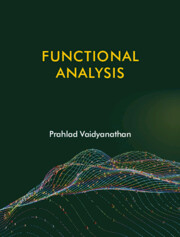Appendices
Published online by Cambridge University Press: 31 January 2025
Summary
A.1 The Stone–Weierstrass Theorem
Here is the statement of the Weierstrass Approximation Theorem that would be familiar to most of us, albeit stated in the language of normed linear spaces.
A.1.1 THEOREM (WEIERSTRASS, 1885) Consider C[0, 1] equipped with the supremum norm and let A denote the set of all polynomials in one variable. Then A is dense in C[0, 1].
The theorem we now wish to prove is a far-reaching generalization of Weierstrass’ Approximation Theorem due to M.H. Stone. It is a theorem that is of fundamental importance to us and is used a few times in the book.
In order to make sense of the statement, we need one fact about spaces of continuous functions. Let X be a compact Hausdorff space and let C(X) denote the space of all complex-valued, continuous functions on X. Given f , g ∊ C(X), we may define the product of f and g by
C(X) is closed under this operation, so it the structure of a ring. What is more, this multiplication operation behaves well with respect to the existing vector space operations, in the sense that
for all f , g, h ∊ C(X) and α ∊ ℂ. This gives C(X) the structure of an algebra (see Definition 7.1.1). Therefore we may now speak of a subalgebra of C(X) - namely, a vector subspace of C(X) that is closed under this multiplication operation. With this notion in place, we may now state the theorem.
A.1.2 THEOREM (STONE–WEIERSTRASS THEOREM (STONE, 1937)) Let X be a compact Hausdorff space and let C(X) be the algebra of continuous, complex-valued functions on X, equipped with the supremum norm. Let A be a subalgebra of C(X) satisfying the following properties:
(P1) A contains the constant function 1.
- Type
- Chapter
- Information
- Functional Analysis , pp. 523 - 532Publisher: Cambridge University PressPrint publication year: 2023

